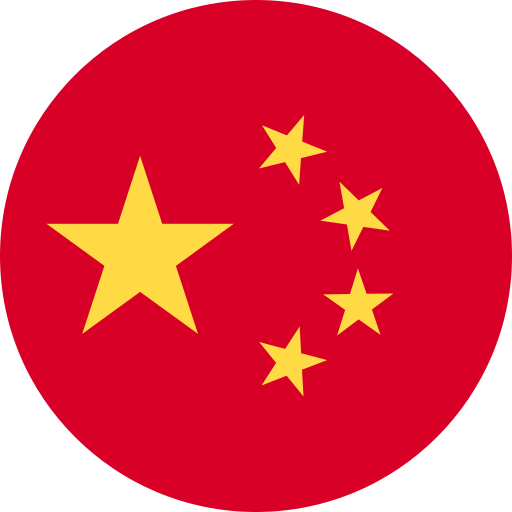Key Takeaways
- Historical Roots: The Chinese language has ancient origins dating back to around 1200 BCE, beginning with oracle bone script and evolving through various dynasties that contributed to its complexity and richness.
- Phonetic Evolution: Significant phonetic changes over time have shaped the tonal system of Mandarin, impacting pronunciation and the structure of syllables.
- Script Development: The transition from simple pictographs to modern simplified characters reflects a long journey of innovation in Chinese writing, fostering clearer communication across different regions.
- Dialectal Diversity: China is home to numerous dialects, each influenced by regional languages and cultures, showcasing the adaptability and richness of the Chinese linguistic landscape.
- Modern Influences: Globalization and technology have introduced new vocabulary and communication styles into Chinese, blending traditional elements with contemporary trends in media and pop culture.
- Cultural Interconnection: The evolution of language mirrors cultural shifts within society, highlighting how historical events shape linguistic developments while maintaining connections to tradition.
Ever wondered how Chinese evolved as a language? It’s a fascinating journey that spans thousands of years, intertwining culture, history, and innovation. From its ancient roots in oracle bone script to the modern simplified characters you see today, Chinese has transformed dramatically while maintaining its unique essence.
Historical Background of Chinese Language
The Chinese language boasts a rich history that spans thousands of years. Its evolution embodies the cultural shifts and historical events that shaped China into what it is today.
Ancient Origins
Chinese roots trace back to around 1200 BCE with oracle bone script, marking one of the earliest forms of written language. This script served not only as a tool for communication but also played a crucial role in divination practices among ancient Chinese civilizations. As time progressed, these symbols transformed into more complex characters, laying the groundwork for later developments.
Development in Dynastic Periods
During different dynasties, such as the Zhou (1046–256 BCE) and Han (206 BCE–220 CE), significant advancements occurred. The Zhou period introduced classical Chinese literature, while the Han dynasty saw standardization efforts that unified various regional dialects under written form. The Tang dynasty (618–907 CE) further enriched the language by incorporating poetry and prose that influenced contemporary expressions. Each era contributed unique elements to vocabulary and grammar, solidifying Mandarin as a standard form recognized across regions today.
Phonetic and Syllabic Changes
Phonetic and syllabic changes significantly influenced the development of the Chinese language over time. These transformations reflect shifts in pronunciation, tone, and structure that shaped how Chinese words are formed and understood.
Tone and Pronunciation Evolution
Tone plays a vital role in distinguishing meaning within the Chinese language. Mandarin, for example, uses four primary tones, while other dialects may have even more variations. Over centuries, tonal pronunciation has evolved due to regional influences and social interactions. Historical linguistics reveals that certain tones shifted or merged as dialects developed, affecting how words are articulated today. For instance, Middle Chinese had different tonal distinctions compared to modern forms, highlighting this evolution’s impact on communication.
Syllable Structure Transformation
Syllable structure in Chinese has also undergone notable changes. Traditionally, each character corresponds to a single syllable—often accompanied by a tone—which creates a straightforward yet rich phonological system. The rise of compound characters introduced more complex syllables that combine meanings from multiple sources. This transformation allowed for greater expressiveness but also required speakers to adapt to new patterns of pronunciation and meaning association over time.
These phonetic and syllabic evolutions illustrate just how dynamic the Chinese language is while maintaining its foundational elements through centuries of change.
Script Evolution
The evolution of Chinese scripts showcases a fascinating journey from simple symbols to complex written forms. Understanding this progression offers insight into the language’s rich history and adaptability.
From Oracle Bones to Modern Script
Chinese script originated with oracle bone inscriptions around 1200 BCE, used primarily for divination purposes. This early writing system consisted of pictographs that represented objects and ideas, laying the foundation for future developments. Over time, these characters evolved into more abstract forms during the Shang and Zhou dynasties, allowing for greater expression and complexity. The transition from oracle bones to bronze inscriptions marked significant advancements in clarity and artistic representation.
By the Han dynasty (206 BCE–220 CE), standardized characters emerged, facilitating communication across vast regions. This period saw the introduction of clerical script, which streamlined character shapes for easier writing. The Tang dynasty further enriched this evolution by promoting poetry and prose that utilized refined forms like regular script, creating a lasting impact on modern written Chinese.
Simplification and Standardization
In response to growing literacy demands in the 20th century, simplification efforts began. The People’s Republic of China introduced simplified characters in 1956 to increase accessibility among learners. These modifications reduced the number of strokes in many traditional characters while retaining their meanings.
Standardization also played a crucial role as Mandarin became recognized as China’s official language. By establishing a common linguistic framework, it unified diverse dialects throughout the country—enabling clearer communication across different regions. Today’s Chinese script reflects both historical depth and contemporary practicality through its blend of tradition and innovation.
Dialectal Variations
Chinese boasts a rich tapestry of dialects, each reflecting unique cultural backgrounds. The diversity in dialects plays a crucial role in the language’s evolution.
Major Chinese Dialects
Mandarin is the most widely spoken dialect, serving as the official standard across China. Cantonese follows closely, predominant in Guangdong province and Hong Kong. Wu, primarily spoken in Shanghai and surrounding areas, showcases distinct phonetic characteristics. Min includes varieties like Hokkien and Teochew, prevalent in Fujian province and among overseas Chinese communities. Other notable dialects include Hakka and Xiāng (Hunanese), which further enrich the linguistic landscape.
Influence of Regional Languages
Regional languages significantly shape Chinese dialects through interaction over centuries. Contact with minority languages has introduced new vocabulary and pronunciation patterns into various dialects. For instance, Tibetan influences are noticeable in certain southwestern Mandarin variants due to geographical proximity. Similarly, interactions with Mongolic languages have impacted northern dialects.
These variations illustrate how local culture and geography intertwine with language development. Understanding these nuances not only highlights the complexity of Chinese but also emphasizes its adaptability amidst changing social dynamics.
Modern Influences on Chinese
Modern influences have profoundly shaped the Chinese language, reflecting both globalization and technological advancements. These factors have led to significant changes in vocabulary, pronunciation, and communication styles.
Globalization and Technology
Globalization has introduced a wealth of foreign terms into the Chinese lexicon. English words dominate areas like technology, business, and pop culture. For example, terms such as „internet” (互联网) and „software” (软件) are now commonplace in everyday conversations. Additionally, technology fosters new forms of communication. Texting and social media encourage brevity through abbreviations and emojis, shifting how you express ideas in writing.
Technology also impacts pronunciation trends. The ease of online interaction leads to exposure to various dialects and accents from around the world. This exposure can influence regional speech patterns, merging traditional sounds with modern colloquialisms.
Media and Pop Culture Impact
Media plays a crucial role in evolving language use among younger generations. Television shows, movies, and music introduce slang phrases that quickly spread across social networks. Popular series often showcase contemporary dialogues that resonate with youth culture.
Pop culture icons contribute significantly to linguistic trends too; their catchphrases become part of daily conversation almost overnight. For instance, phrases from popular variety shows or viral videos can lead to widespread adoption among fans.
Social media platforms serve as melting pots for linguistic innovation where users experiment with language creatively through memes or hashtags—often blending languages seamlessly for humor or emphasis.
As these influences continue shaping modern expressions within the Chinese language landscape, they enrich its diversity while maintaining deep-rooted connections to history and tradition.
Conclusion
The evolution of the Chinese language is a testament to its resilience and adaptability. From ancient scripts to modern characters it has weathered centuries of change while retaining its core identity. The interplay between dialects and regional influences further enriches the language making it a vibrant tapestry of cultural expression.
As you explore Chinese today you’ll find a dynamic blend of tradition and modernity shaped by historical events and contemporary trends. Embracing both its rich heritage and future possibilities the Chinese language continues to thrive in an ever-changing world. This journey through time not only highlights linguistic transformations but also reflects the profound connection between language, culture, and society.
Frequently Asked Questions
What is the origin of the Chinese language?
The Chinese language originated from ancient oracle bone script around 1200 BCE. This early writing served both as a form of communication and for divination, marking the start of an evolving linguistic journey.
How has the Chinese language evolved over time?
Chinese has transformed dramatically through various dynasties, preserving its unique identity. Key developments include classical literature during the Zhou dynasty and standardization in written form during the Han dynasty, leading to modern Mandarin.
Why are tones important in Mandarin?
Tones are crucial in Mandarin as they distinguish meaning between words that may otherwise sound identical. Mandarin uses four primary tones, while other dialects may have even more variations affecting pronunciation and comprehension.
What role do dialects play in the Chinese language?
Dialects reflect diverse cultural backgrounds within China. While Mandarin is the official standard, dialects like Cantonese and Wu showcase distinct phonetic characteristics, influenced by local languages and interactions throughout history.
How did written Chinese evolve?
Written Chinese evolved from simple symbols to complex forms beginning with oracle bone inscriptions. The transition through bronze inscriptions to standardized characters has shaped modern scripts used today, including simplified characters introduced in 1956.
What modern influences affect the Chinese language today?
Globalization introduces foreign terms into colloquial use, especially from English related to technology and pop culture. Additionally, social media fosters creativity in language usage among younger generations through slang and abbreviations.
Why was simplification introduced in written Chinese?
Simplification efforts were implemented after 1956 to enhance literacy across China by making characters easier to learn and write. This initiative aimed to unify diverse dialects under a standardized form suitable for contemporary communication.







